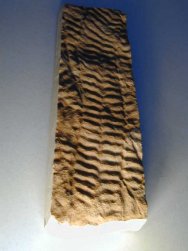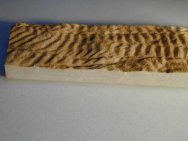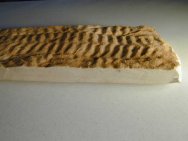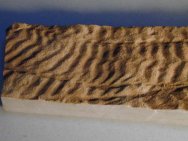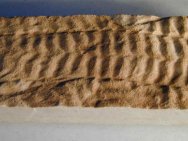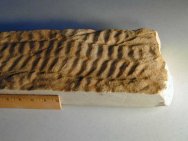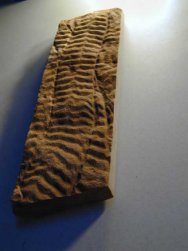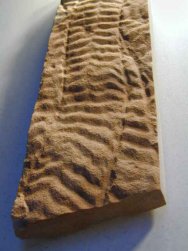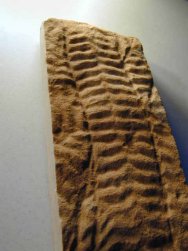Climactichnites wilsoni Trace Fossil (Ichnofossil)
Geological Time: Cambrian
Size: Inches (25.4mm=1 inch): Matrix: 24 by 7 by 1 3/8 th inches, weighing 24 pounds
Fossil Site: Blackberry Hill, Krukowski Quarry, Elk Mound Group, Mount Simon Sandstone, near Mosinee, Wisconsin
Fossil Code: DD33
Price: $625.00 - sold
|
The
depositional environment in this quarry varies from very shallow
marine to aerial. This is very significant as the ichnofossils from
this locality may be the earliest evidence of large organisms and
carnivores abandoning their marine habitat to utilize the terrestrial
environment. If verified to be Middle Cambrian, these ichnofossils
may pre-date the Cambrian-Ordovician trackways from Canada just
described in the May 2002 issue of Geology. Climachtichnites has been described as looking like the track of a motorcycle that drove across rippled sand. The ripples in the sandstone confirm that the layer is an upper bedding plane. If Climachnichnites is a trackway, the traverse ridges can be viewed as made by muscular undulation as the animal motivated through the sand above the water. Also note the ridges on the margins on the tracks, the same as the ridges that build on either side of blade of a bulldoser. One theory of Climactichnites is that it was made by a large slug, others believe a mullusk, and still others posit an animal in an unknown Phylum that did not survive much beyond the Cambrian. This particular specimen is among thebest Climactichnites fossils to emerge from the quarry in terms of the sharp distinctness of the imprint. Additionally, while there is a full-length Climactichnites, it overlays additional tracks that run more diagonally. |

